Rio de Janeiro is beguiling, thrilling and, at times, a little intimidating. With so much history and natural beauty, one thing’s for sure: you’ll never get bored of this unique city.
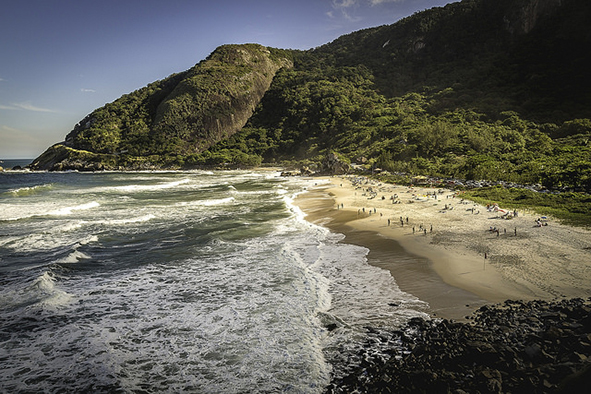
One of the scores of stunning beaches near Rio (Photo: Yacine Petitprez via Flickr / CC BY 2.0)
As cities go, there are few that are quite as unique as Rio de Janeiro. The name alone conjures up images of giant Jesus statues, chaotic Carnivals and beautiful beaches filled with beautiful people. There’s also the other side of the big city, with its overlooked poor and their resilient and distinct favela culture. And yet, looking over the urban area from Sugarloaf Mountain or one of Rio’s many other peaks, it’s easy to think that this is one of the best examples of humans and nature commingling in perfect harmony.
It almost seems improbable that a vast urban area has grown up along such a mountainous coastline, but therein lies the charm: urban sprawl, often untamed apart from when it’s broken up by lofty, tropical peaks plunging all the way down to fractured bays contoured by sweeping beaches and pockmarked by islets. Throw a self-assured Latin American culture into the mix, infused with history and pride and you have endless opportunities for unique experiences in Rio de Janeiro. Here are just a handful of them.
Get your bearings at Praça 15 de Novembro
Downtown Rio, known as Centro, can get a little hot and congested, but the city centre is the best place to learn about Rio’s history and start to unravel its complex identity. As the spot where the Portuguese royal family landed when they first arrived in Rio, Praça 15 de Novembro is a good place to start. There you’ll find some of the city’s finest colonial architecture, including the Imperial Palace – where Princess Isabel proclaimed the freedom from slavery act in 1888 – and Tiradentes Palace, currently home to the state legislature, where you can learn all about Brazil’s turbulent political history. When it’s time to take a break, bars spill out onto the street through Arco de Teles, on the north side of the plaza.
Praça Quinze de Novembro – Centro
Take the rack railway to meet Christ the Redeemer
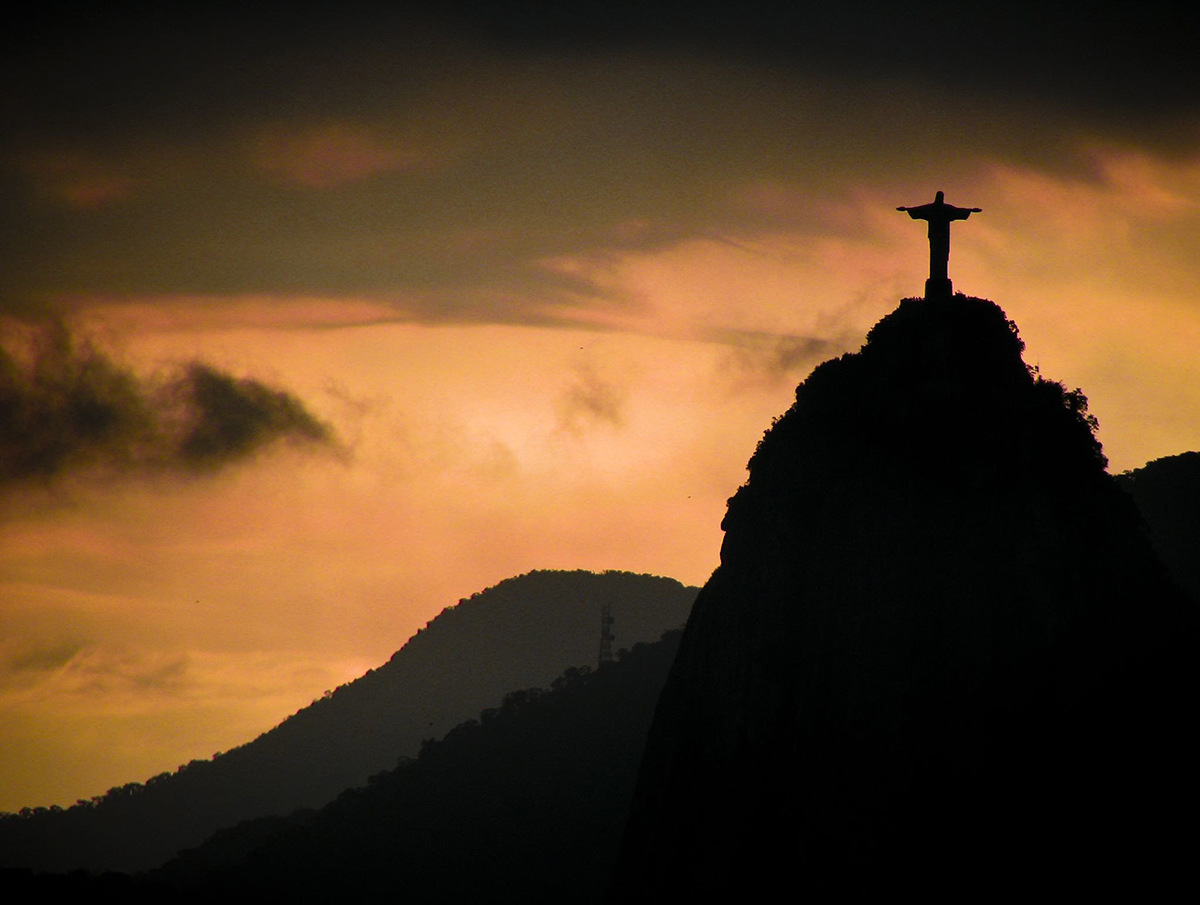
Christ the Redeemer (Photo: anthony_goto via Flickr / CC BY-SA 2.0)
Having one of the New7Wonders of the World overlooking your house is just another aspect of daily life for Rio residents. Standing 30 metres (98ft) tall and completed in 1931, Christ the Redeemer seems inseparable from any thought of Rio de Janeiro. Unique doesn’t even begin to describe it. Although it’s located at the top of Corcovado mountain, you can take the rack railway to the top. The 20-minute journey is unique in its own right, using an old European style of steep grade railway that was originally built here in 1884, predating the statue by decades. In fact, that may have been one of the reasons why the mountain was chosen to host Christ in the first place. That, and the magnificent view over all of the old Rio neighbourhoods that it commands. The system can only carry 540 people per hour and tickets do sell out in advance. To purchase yours in advance and avoid the long wait at the station, check out this booking site.
Corcovado train entrance: 090, R. Cosme Velho, 461-513 – Cosme Velho
Sing a world-famous song on a Rio beach
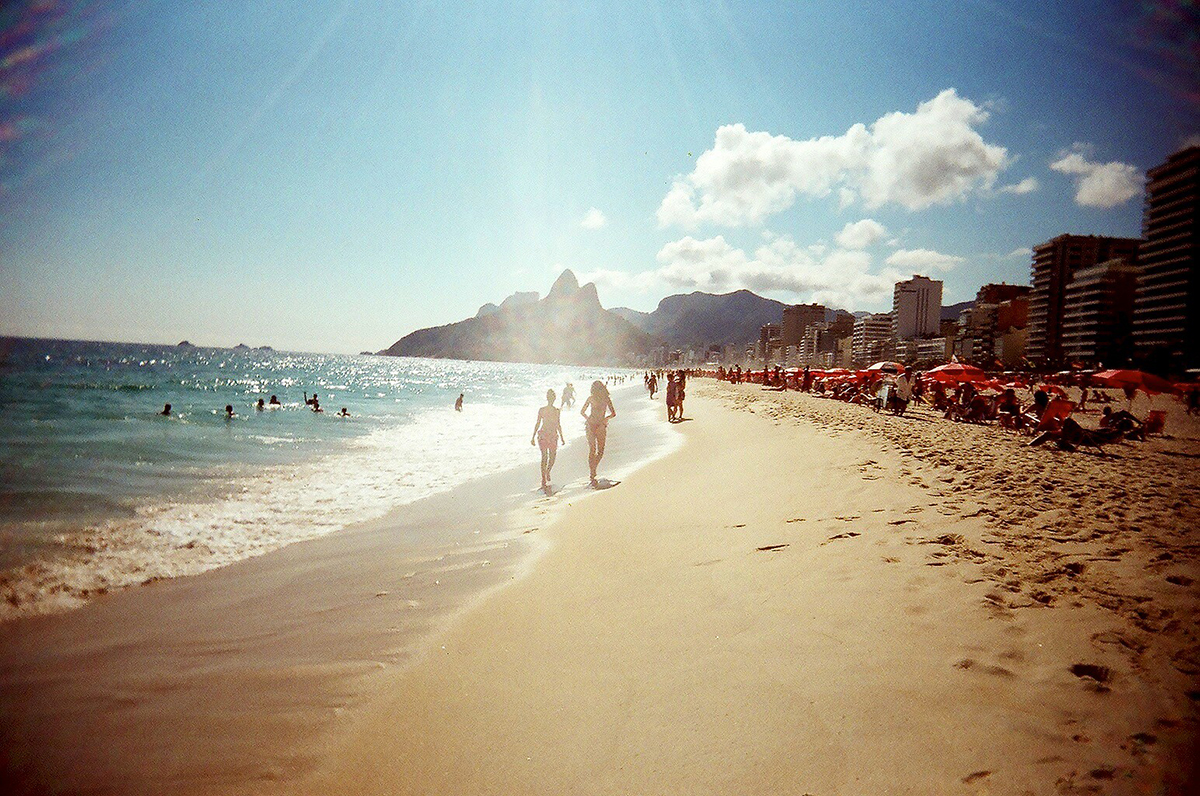
Girls from Ipanema (Photo: leesean via Flickr / CC BY-SA 2.0)
Who can forget Barry Manilow’s “Her name was Lola, she was a showgirl”, or how about Ol’ Blue Eyes (Frank Sinatra) crooning “Tall and tan and young and lovely”? And what about “Her name is Rio and she dances in the sand?” Technically, two of these aren’t name dropping Rio beaches. Copacabana is about a showgirl working a club near Havana, and Duran Duran’s Rio wasn’t even about the city once they’d rewritten it. Simon Le Bon took the original idea by bassist John Taylor and made it about a girl called Rio, rather than the place. But The Girl From Ipanema is about a model presumably living in that neighbourhood and walking down to the sea each day. Either way, all three songs are inspired by the beauty of or in Rio. If you visit the famous beaches Copacabana and Ipanema and don’t find yourself involuntarily humming one of these tunes, it’s probably because you’ve somehow avoided ever hearing them.
Take a respectful favela tour with a local resident
There has rightly been some backlash in the past to the rather colonial-gaze oriented, theme park style jeep tours of Rio’s favelas. But these neighbourhoods are unfathomably complex places, that must be treated and experienced with respect, if at all. The only way to do that is to make sure your money is going to someone in the community, and that your knowledge is coming from first-hand experience. With those two caveats, it’s possible to begin to really appreciate the remarkable culture that thrives here. This particular guided walking tour of Rocinha Favela, for example, is non-intrusive and aims to dispel many of the stereotypes by exploring the daily life, history and struggles faced by many of the inhabitants.
Feel the fervour at Rio’s Metropolitan Cathedral
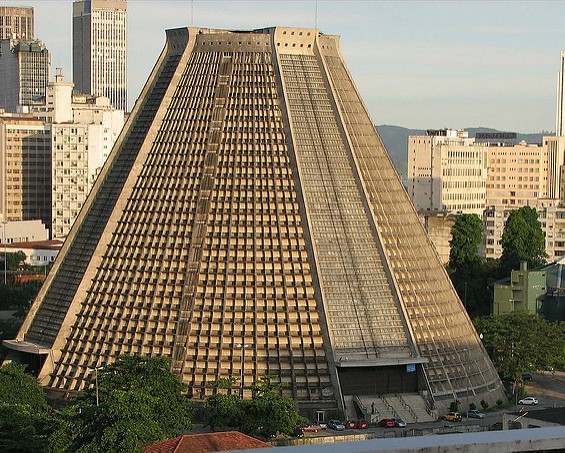
Rio’s cathedral – inspired by the Maya pyramids in Mexico (Photo: Cyro Silva via Flickr / CC BY 2.0)
As the country with the largest Catholic population in the world, religion is a significant part of the Brazilian character. And there’s no clearer emblem of this than the towering cathedral in downtown Rio. A modernist structure (construction started in 1964), this volcano of a building is ugly to some and beautiful to others – but either way, it is mightily impressive. It’s huge. Twenty-thousand people can fit inside it at any one time. Inside you’ll find neon-esque stained-glass panels stretching up to a light-filled cross lying over the building’s circular roof. This inspiring building is located on the fringes of Centro.
Av. Chile, 245 – Centro
Soak up the atmosphere at a Maracanã football match
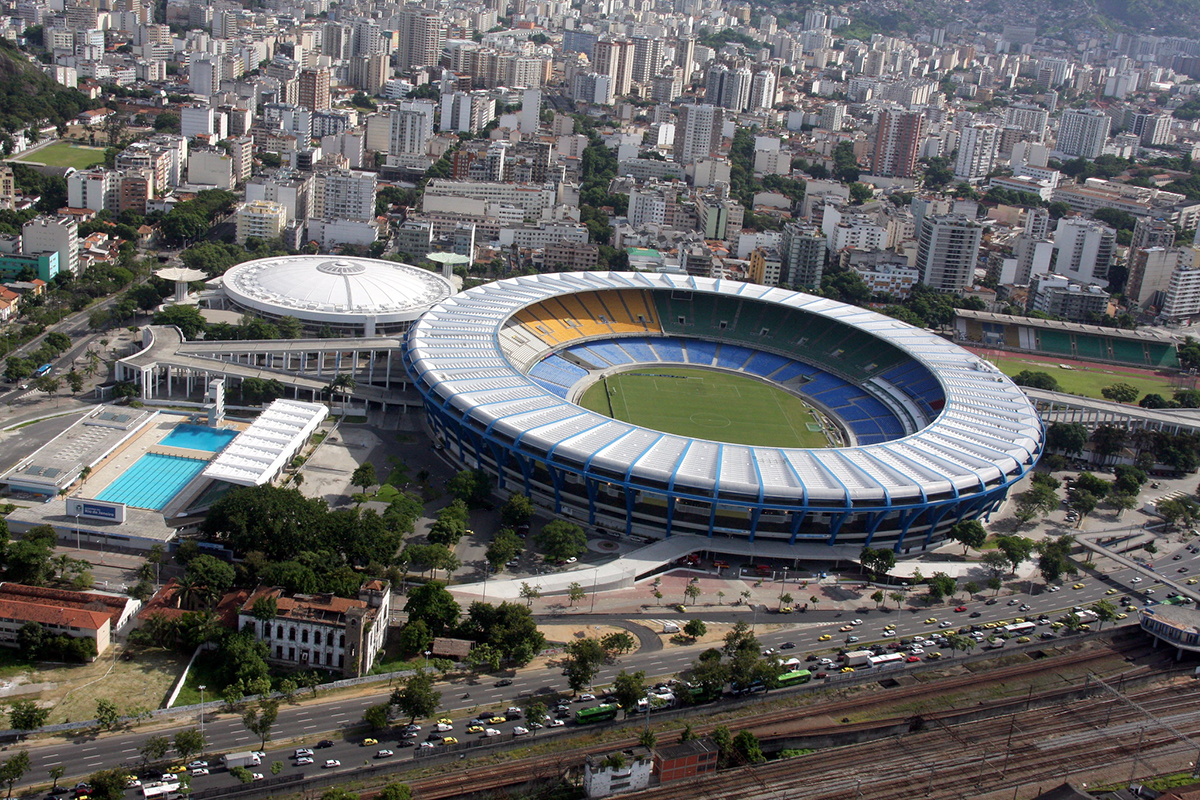
Maracanã Stadium (Photo: Pedro Lopez via Flickr / CC BY 2.0)
There’s another sort of religion in Brazil besides Catholicism: football. And its most hallowed institution? The Maracanã, right in the heart of Rio. This huge stadium once held more that 150,000 spectators, but has since been altered to an all-seated stadium with a capacity of almost 79,000. That’s still enough for an electric atmosphere. Two teams call this home – Flamengo and Fluminese – making for one of the most upbeat, festival-like rivalries in Brazilian football. But if you’re not lucky enough to get a ticket to a Fla-Flu game, as its called, other major matches get played here too, including international games. One highlight being the final of the Brazilian World Cup in 2014 (although not for Brazilians, whose team was ignominiously dumped from the competition by Germany – but don’t mention that in earshot of any locals).
Av. Pres. Castelo Branco, Portão 3 – Maracanã
Start your day with a mug of home-grown coffee
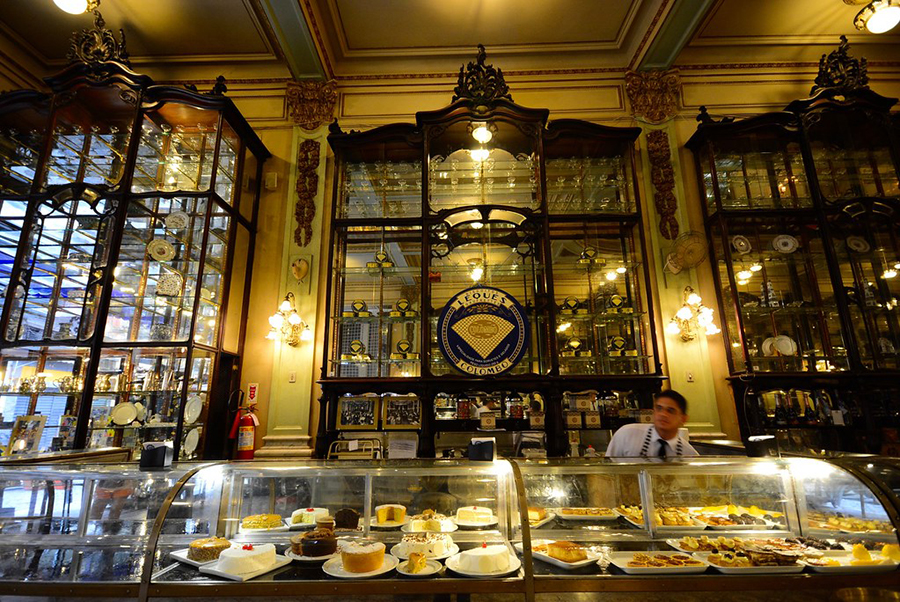
Confeitaria Colombo (Photo: Alejandro via Flickr / CC BY 2.0)
For a country that exports so much of the stuff, it’s surprisingly hard to find a decent cup of coffee in Rio, but there is a growing number of cafes dotted around the city where you can find delicious, home-grown coffee. Enter Curto Café. These guys take their coffee incredibly seriously. Their mission? To bring affordable, quality Brazilian coffee to the masses. Their method? Unique – there are no set prices for their coffees. Instead, customers are invited to look over a board listing the coffee shop’s overheads each month (including how much profit they made the previous month), and asked to pay what they think is a fair price. Curto Café has a relaxed and friendly vibe, and the produce itself is spectacular. Alternatively, for a coffee in a unique setting, try Confeitaria Colombo: intricate tile floors, a stained-glass roof and smartly dressed service staff.
Curto Café: Av. Erasmo Braga, 278 – Centro
Confeitaria Colombo: R. Gonçalves Dias, 32 – Centro
Eat until you have to lie down at a churrasqueira
There are many culinary highlights in Rio, including pao de queijo (cheese bread) and the gorgeous feijoada bean stew, but the ultimate eating experience (read: food challenge) are the churrasqueiras. Not ideal for vegans and vegetarians – or full stomachs – churrasqueiras serve grilled meats by the shed load as waiting staff amble from table to table offering different cuts. Diners use a green-red card system to indicate whether or not they wish to continue eating – most people need at least a few breathers. One of the best churrasqueiras in town is Carretao. Located on a street just off of Copacabana beach, it boasts the dreamy combination of prime location and prime cuts.
Carretao: Rua Siqueira Campos, 23 – Copacabana
Learn how to samba dance
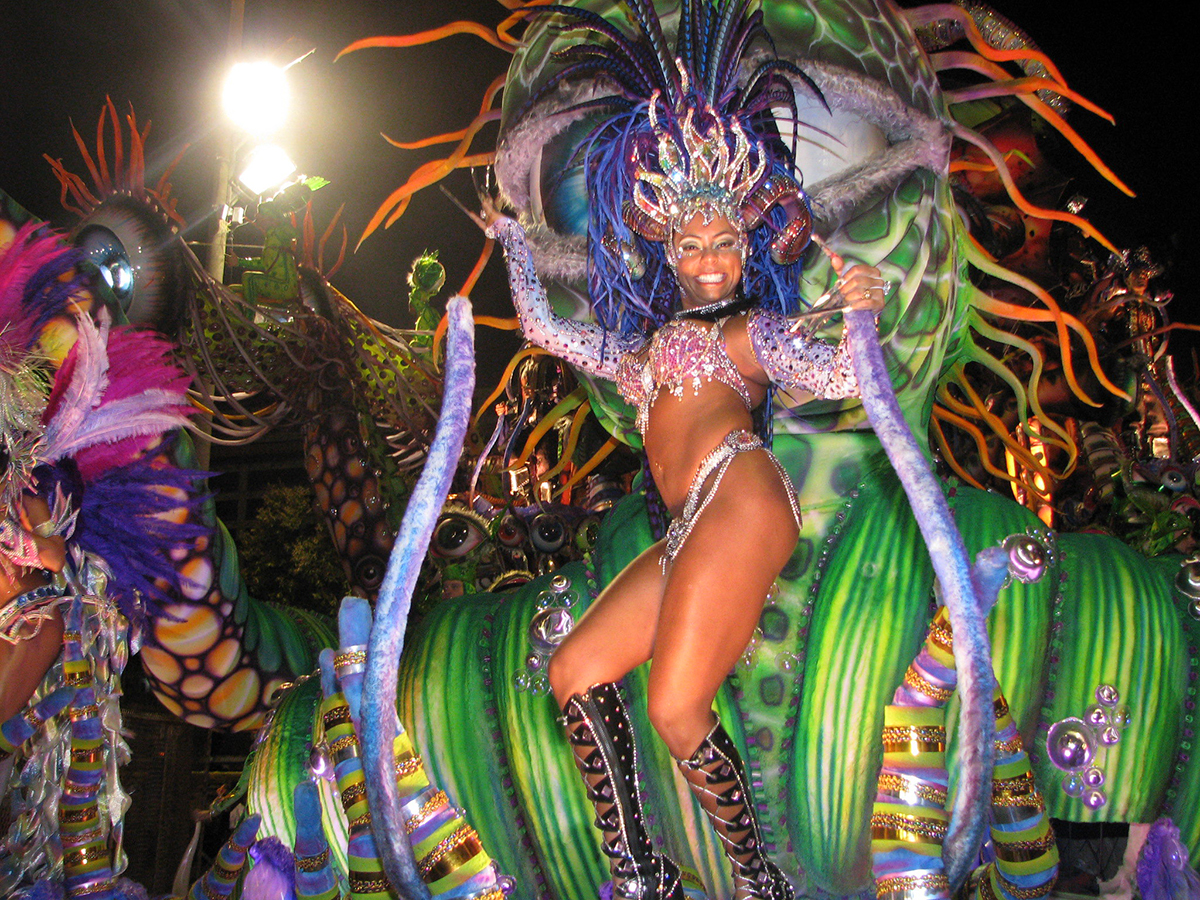
Samba dancers at the Carnival (Photo: Carnaval.com Studios via Flickr / CC BY 2.0)
First things first, if you search for “samba school” in Google, you’re very likely to come up with a lot of information about the Carnival. That’s because samba schools in Rio are not educational institutions. They are actually established social clubs, which compete against one another each year at the Carnival. They even create their own costumes, stories, music and lyrics each year. While you can go to a samba night held by these schools, in order to first learn how to dance to samba music, it’s best to search for samba classes. There are many great places around the city to take samba classes in English. Rio Samba Dancer, between Copacabana and Ipanema beaches, does great group classes, offering a crash course in the rhythms and steps required to get you on your way.
Rio Samba Dancer: R. Francisco Otaviano, 61 – Copacabana
Dance the night away in Lapa
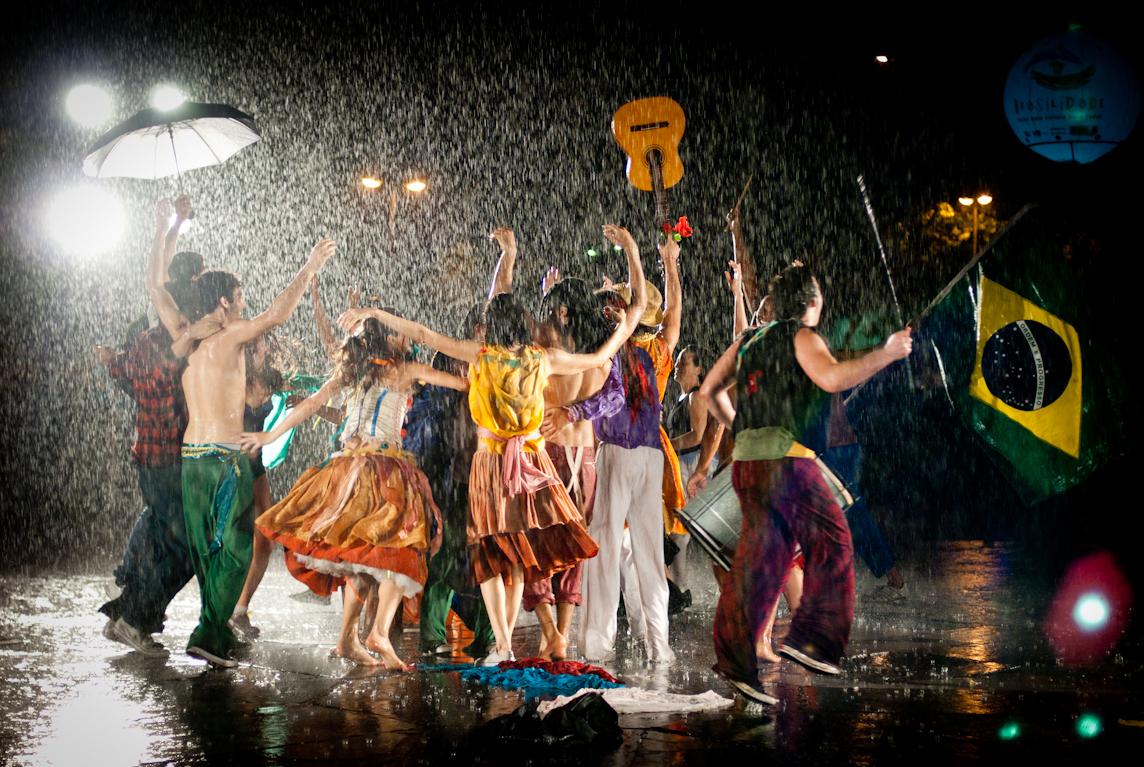
Dancing in the Lapa street (Photo: Rafae Silva via Flickr / CC BY 2.0)
With your new dance skills, it’s important to know that no Rio trip is complete without a night out in Lapa. Start at the arches, aka Carioca Aqueduct. It’s the best place to tap into the true spirit of Lapa, with live samba music in the street and vendors selling healthy doses of caipirinhas to get everyone moving. The street parties happen on Fridays and Saturdays and go on until late. From there, night spots are the logical next stage of the night. All around Ave. Mem de Sá, northwest from the aqueduct, there are dozens of excellent bars. Bar Leviano has decent cocktails and a lively dance floor. Ten minutes’ walk north from here, Bar Scenarium has regular live music. Wherever you end up, Lapa is a uniquely memorable night out.
Take a hang gliding adventure over the city

Hang gliding over the rainforest (Photo: via Getyourguide.com)
There are few better ways to get the full picture of a city than by looking down on it from above, and for those seeking unparalleled views of the Cidade Maravilhosa in the most thrilling manner, there’s only one option: hang gliding. Launching from one of the many mountains that surround the city, you’ll soar over rainforest and the Atlantic Ocean, before landing in style on one of Rio’s white-sand beaches. Flight prices are often much lower in low season (April to November, excluding holidays). This isn’t for the faint-hearted, but is a truly unique experience. Try this unerringly popular 2.5-hour tandem flight for a great balance of experience and competitive year-round pricing.
Stroll through the debonair neighbourhood of Santa Teresa
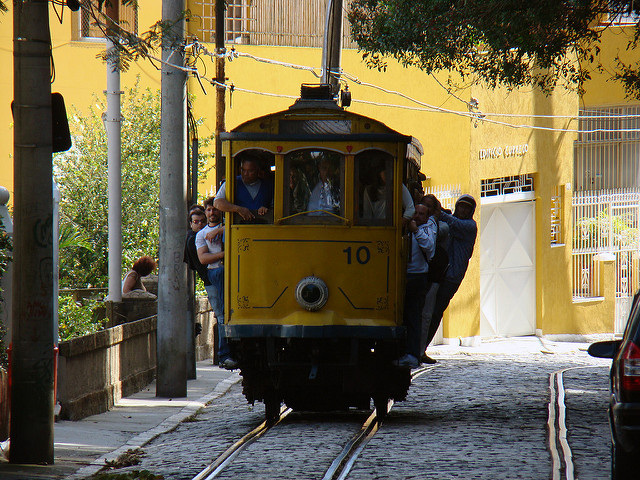
You can ride the tram from Lapa up to Santa Teresa (Photo: Rodrigo Soldon via Flickr / CC BY 2.0)
As Rio’s ‘bohemian’ district, and a good stop off point on the way back from visiting Christ the Redeemer, Santa Teresa is a must for anyone looking for another side of Rio. Its cobbled streets, pretty colonial houses and cafés are a polar opposite of the busier districts that hug the coastline. The rickety tram is evocative of Lisbon, which may well have been the influence. Santa Teresa used to be the domain of the rich and famous before they fled in the 1960s and 70s to the south of the city, away from the city centre. It later became a hub for artists and artisans, and there are still plenty of small shops dotting Santa Teresa’s narrow streets where you can pick up local artwork.
Escape the heat at Jardim Botânico
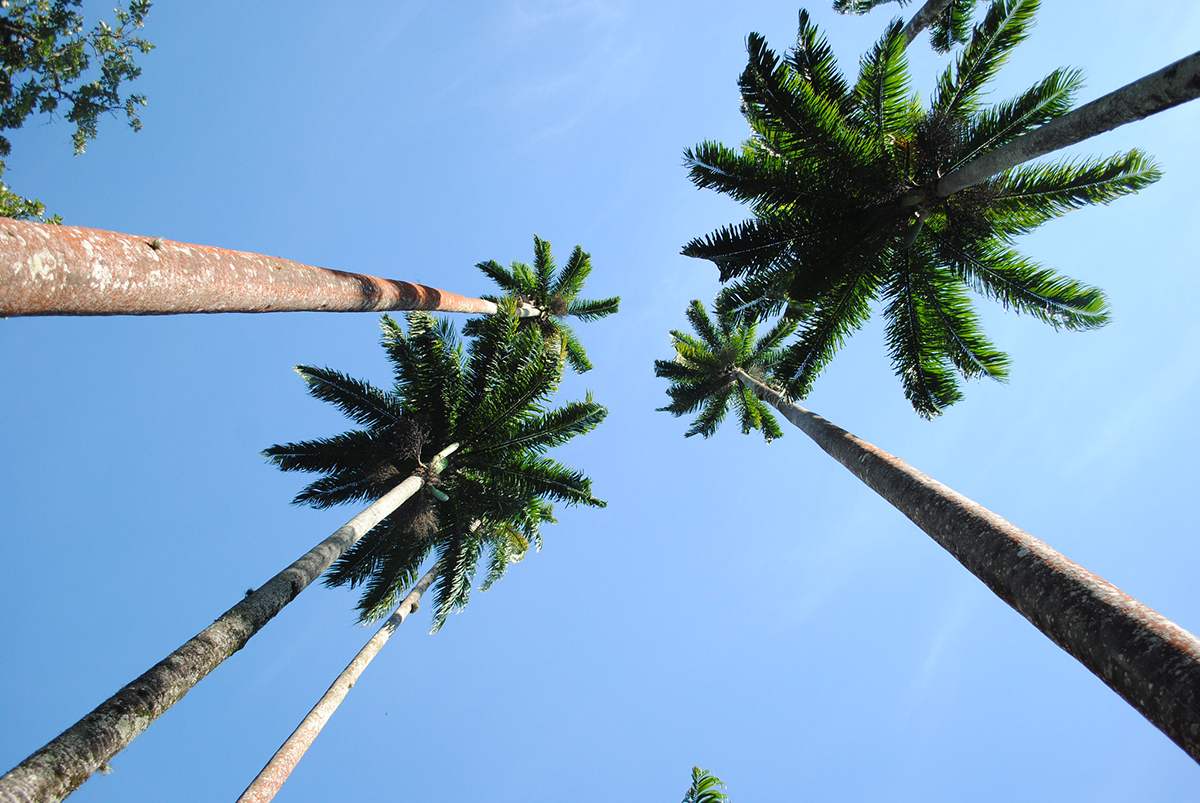
Tall palms of Jardim Botânico (Photo: Vinicius Pinheiro via Flickr / CC BY-SA 2.0)
If you ever grow tired of Rio’s clamorous streets and beaches and want some time out, Rio’s sprawling botanical garden is an ideal antidote. Situated close to Lagoa Rodrigo de Freitas and at the foot of Pedra D’Agua and opened in 1808, this is a tranquil space, where tall palms race to the skies and fountains trickle cooling water. Birds chirp, frogs croak and you almost lose the sound of the traffic in the distance. You may even see a monkey or two. Particular highlights are the more than 600 species of orchids, and you’ll occasionally find a break in the trees with impressive views of Christ the Redeemer in the distance.
R. Jardim Botânico, 1008 – Jardim Botânico
Hop beaches until you find that little slice of sandy tranquillity
Beach life is a vital thread of Rio’s fabric. Socialising, sport, soul searching – a lot is done at the beach. Copacabana and Ipanema are spectacular – a must see – but when you’re after something calmer, away from the crowds, there are plenty of beaches a little further out of town that are just as spectacular as the big two. Heading southwest out of the city on the main highway, towards Barra da Tijuca, you’ll find plenty of stunning beaches. Prainha and Praia da Macumba are among the best. And while they may not exactly be empty, they’re usually significantly quieter than the inner city stalwarts. To make the most of it, rent a car for a day and beach-hop along the coast. Make sure to get a convertible and crank up the bossa nova.
Rise above it all at Pedra da Gavea
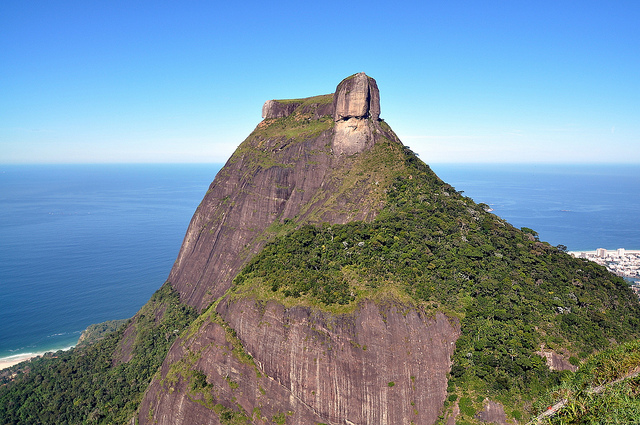
For some of the best views of Rio, there’s Pedra da Gavea (Photo: Leonardo Shinagawa via Flickr / CC BY 2.0)
Despite the procession of jaw-dropping views in Rio, there are still places that can truly surprise visitors, new and old. While the most popular destination for vistas is Sugarloaf Mountain, the energetic and adventurous hike up Pedra da Gavea. At a lofty 844 metres (2,769ft) it is one of the tallest mountains in the world to directly border the sea. This giant monolith lies west of the historic neighbourhoods of the city, offering mesmerising views of Rio and its surroundings. The trek up there can be dangerous for the poorly prepared; it can take 4-6 hours, including a short section of scrambling and a roughly 30-metre (98-foot) rock climb. There are some excellent tours available though, such as this one, facilitating your ascent and providing the necessary gear and expertise along the way.
Barra da Tijuca
Surround yourself with knowledge at the Royal Portuguese Cabinet of Reading

The Royal Portuguese Reading Room (Photo: Mayumi Ishikawa from JAPAN via Wikimedia / CC BY-SA 2.0)
Undoubtedly one of the world’s great libraries, the Royal Portuguese Cabinet of Reading is an important cultural institution in Brazil. It contains the largest collection of Portuguese-language books outside of Portugal. Perhaps more significantly for visitors, the singular beauty of the building makes this a must-visit for bibliophiles and those who can appreciate architectural beauty. The building’s facade and interiors follow what’s known as Neo-Manueline architecture, a Portuguese take on late Gothic architecture. Of particular impact is the reading room, with its three tiers of books, enough to humble even the most intelligent of people.
R. Luís de Camões, 30 – Centro
Contemplate the future at the Museum of Tomorrow
Staking a claim for one of Latin America’s 21st century architectural masterpieces, the Museum of Tomorrow is part of a broader regeneration of the city’s old docklands. This inspiring museum takes the viewer on a journey through natural history to assess the impact humans are having on our planet. As home to 4.9 million square kilometres of forest, Brazil urgently needs to address these questions and the Museum of Tomorrow is doing its bit to push the issue into the spotlight by asking what might be done to build a more sustainable future. At the time of writing, ironically, Brazil’s leaders represent a giant step backwards for our wild spaces, proving just how prescient and pressing this museum’s conversation is.
Praça Mauá, 1 – Centro
